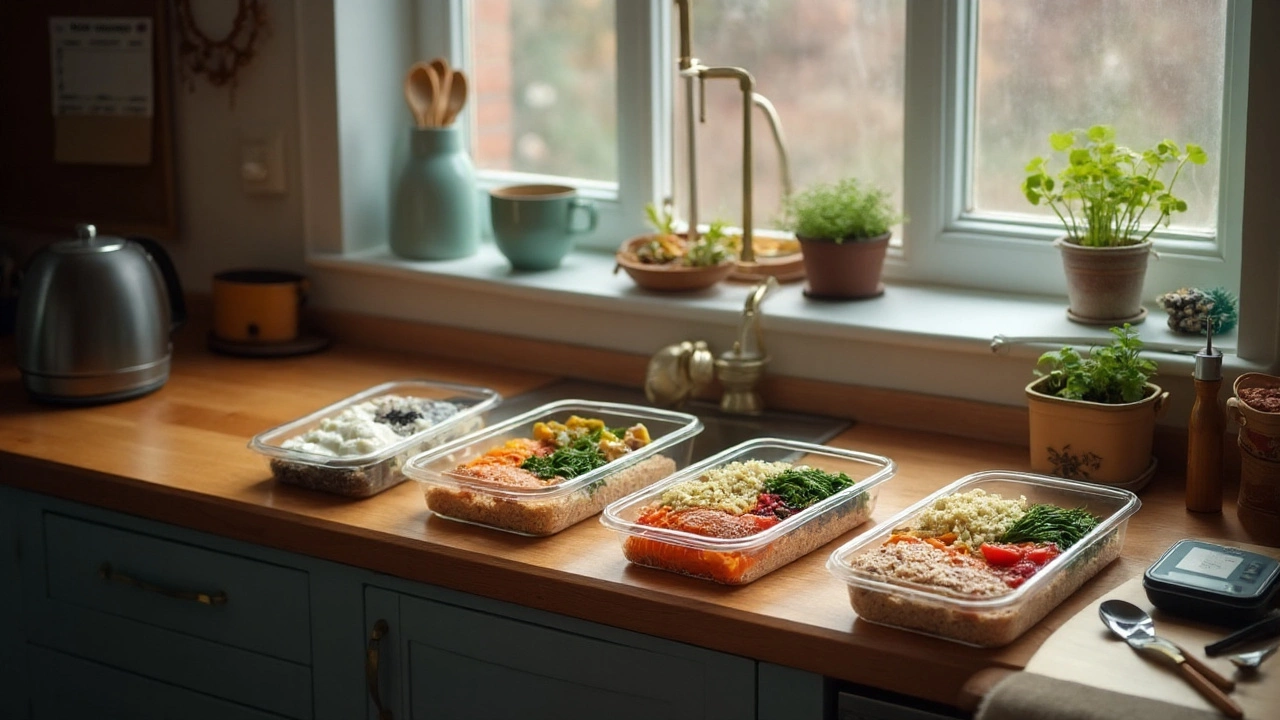
Yes-but not the way a glossy ad sells it. In 12 weeks you can go from puffing on the stairs to running a strong 5K, lifting real weight, and seeing actual shape in your shoulders and legs. You won’t rewrite your genetics or turn into a pro athlete that fast, but with about 5-6 focused hours a week, smart food, and decent sleep, you can look and feel “really fit.” Here in Sydney, spring mornings are perfect training weather-cool, bright, and hard to skip.
If your goal is to get fit in 3 months, here’s what’s realistic and exactly how to do it without wasting time.
TL;DR
- Most people can improve key fitness markers 10-20% in 12 weeks with 5-6 hours/week: faster 5K, more push-ups and pull-ups, stronger lifts, lower resting heart rate.
- Visible changes are typical: 2-6 kg fat loss and 1-3 kg lean mass gain for novices (Sports Medicine meta-analyses; ACSM guidance; ISSN protein position stand).
- Plan: 3 full-body strength sessions, 2 cardio sessions (one interval, one easy/long), 1 short mobility day; progressive overload and consistent steps (8-12k/day).
- Eat: protein 1.6-2.2 g/kg/day, a 10-20% calorie deficit for fat loss or small surplus if underweight; mostly whole foods; sleep 7-9 hours.
- Test at Week 0, 4, 8, 12; track RPE, steps, and recovery; adjust loads by 2.5-5% when you hit the top of your rep range.
What “really fit” means in 12 weeks (and what’s realistic)
“Really fit” depends on your starting point. For most adults, it means you can run or ride for an hour without feeling wrecked, lift your bodyweight in key patterns, move well without aches, and your clothes fit better. In number terms over 12 weeks, realistic targets look like this:
- Cardio: 5K time down by 1-4 minutes, or a higher beep test level or longer distance in the 12‑minute Cooper test.
- Strength: 15-30% increase in your main lifts if you’re new; 7-15% if you’re trained. Push-ups can often double. Many go from 0 to 3-8 pull-ups.
- Health markers: resting heart rate down 5-10 bpm; better sleep; more energy late in the day.
- Body comp: fat down 2-6 kg with a modest deficit; muscle up 1-3 kg in novices (body recomposition is common if you’re new or returning).
Evidence? The Australian Department of Health and Aged Care advises 150-300 minutes of moderate or 75-150 minutes of vigorous aerobic activity weekly, plus muscle-strengthening at least twice. The American College of Sports Medicine (ACSM) reinforces that 2-3 days of progressive resistance training drives strength and hypertrophy in beginners within 8-12 weeks. A Cochrane review and multiple HIIT studies show VO2 max can rise 3-7 ml/kg/min in 4-12 weeks. A 2020 Sports Medicine meta-analysis shows meaningful lean mass gains in novices in 12 weeks with enough protein.
So yes, you can be “really fit” by everyday standards in three months. Not stage-ready bodybuilder fit, not marathon-pr in two hours, but strong, leaner, and aerobically solid.
The 12‑week training plan (step-by-step program)
Time budget: 5-6 hours/week. If you can do more, great. If not, this still works.
Weekly structure (swap days as needed, but keep the pattern):
- Mon - Strength A (full-body)
- Tue - Intervals (run, bike, row, or swim)
- Wed - Strength B (full-body)
- Thu - Easy cardio 30-60 min + mobility 10-15 min
- Fri - Strength C (full-body)
- Sat - Long easy cardio 45-75 min (Zone 2)
- Sun - Rest or gentle walk/mobility
Phases
- Weeks 1-4: Base. Learn movements, build consistency, keep reps in reserve (RIR) 2-3 on strength; cardio mostly easy with one hard day.
- Weeks 5-8: Build. Add load/volume; extend intervals; nudge long cardio up; add a finisher once per week if recovery is good.
- Weeks 9-12: Peak & Test. Hold volume steady, push intensity selectively; test in Week 12.
Strength sessions (A/B/C) - 45-60 minutes, full-body. Warm up 5-8 minutes (easy cardio + dynamic moves). Then:
- Squat pattern: Back squat or goblet squat - 3-4 sets x 5-8 reps
- Hinge: Deadlift (trap bar/RDL) - 3-4 x 5-8
- Horizontal push: Bench press or push-ups - 3-4 x 6-10
- Horizontal pull: Row (barbell/cable/DB) - 3-4 x 6-10
- Vertical push: Overhead press - 3 x 6-10
- Vertical pull: Pull-ups/lat pulldown - 3 x 6-10 (assistance if needed)
- Carry/core: Farmer’s carry or loaded carry - 3 x 30-60 m; finish with side plank 2 x 30-45s each side
Progression rule: when you hit the top of the rep range with good form, add 2.5-5% load next time. Keep 1-2 reps in reserve (RIR) most sets. If form slips, reduce load and complete the reps clean.
Intervals day - pick your mode (run, bike, row, swim). After a 10‑minute warm-up:
- Option A: 4 x 4 minutes hard (RPE 8/10), 3 minutes easy between
- Option B: 30 seconds hard / 30 seconds easy x 12-16
- Option C: Hills: 8-10 sprints up a moderate hill (walk down). Runners in Sydney: Barangaroo, Centennial Park, or suburban ovals work well.
Cool down 5-10 minutes. If your shins/knees complain, switch to the bike or rower for a few weeks.
Easy cardio day - 30-60 minutes at conversational pace (Zone 2, RPE 3-4). Brisk walk, easy jog, cycle, swim. You should be able to talk in full sentences.
Long easy day (Sat) - 45-75 minutes at Zone 2. Build this by ~10% per week if it feels good. This is the engine-builder.
Mobility (daily 10-15 minutes) - hit hips, ankles, T‑spine, shoulders. Examples: couch stretch, 90/90 hip switches, ankle rocks, cat‑cow, thoracic rotations, band dislocates.
Beginner modifications
- Do goblet squats and RDLs instead of barbell in Weeks 1-4.
- Assisted pull-ups or lat pulldowns until you get your first bodyweight rep.
- Intervals: start with Option B but cap at 10 rounds.
- Volume cap: 3 working sets per lift in Weeks 1-2.
Intermediate tweaks
- Use a double progression (e.g., 3 x 5-8; add reps first, then load).
- Add a secondary lower-body movement (e.g., split squats) 2 x 8-10.
- Intervals: Option A at 90-95% of your 5K pace for runners.
Warm-up mini-template
- 3-5 minutes easy cardio (row/bike/jog)
- Dynamic: 10 leg swings each way, 10 hip rocks, 10 arm circles, 10 inchworms
- 2 ramp-up sets of your first lift
Time-crunched? Do this 30‑minute version
- Mon: Strength (squat, press, row) 3 x 5 each + 5-8 minutes intervals
- Wed: Strength (hinge, push, pull-up) 3 x 5 each + 10 minutes brisk walk
- Fri: Strength (front squat, bench, carry) 3 x 5 each
- Sat: 30-40 minutes Zone 2

Eat for performance: simple nutrition that works
Food is the gas and the repair crew. You don’t need a perfect meal plan; you need a steady one.
Calories
- Maintenance (rough): body weight (kg) x 30-33 = daily kcal. If you sit most of the day, use x 28-30; if very active, x 33-36.
- Fat loss: aim for a 10-20% deficit (usually 300-600 kcal/day).
- Muscle focus with minimal fat gain: small surplus of 100-250 kcal/day.
Protein (ISSN position stand): 1.6-2.2 g/kg/day. Spread across 3-4 meals. Post‑workout target ~0.3 g/kg (e.g., 25 g for an 80 kg person).
Carbs fuel training: 3-5 g/kg on training days (less on rest days if cutting). Centre carbs around workouts (pre: oats/banana; post: rice/potatoes/fruit).
Fats: 0.6-1.0 g/kg/day. Mostly extra virgin olive oil, nuts, avocado, dairy.
Hydration: 30-40 ml/kg/day. Add 300-600 ml per hard session. Sydney gets warm fast-if you’re sweating through spring into summer, use a pinch of salt or a low‑sugar electrolyte.
Simple plate method (no weighing required):
- Half the plate vegetables/salad
- Quarter protein (chicken, eggs, Greek yoghurt, tofu, lean beef, fish)
- Quarter smart carbs (rice, potatoes, oats, fruit, wholegrain bread)
Easy Aussie staples: oats + Greek yoghurt + berries; eggs on grain toast + avocado; tuna and rice bowls with salad; chicken stir‑fry with frozen veg; slow‑cooker beef and potato; cottage cheese and fruit; protein shake + banana.
Alcohol and caffeine: Keep alcohol low (sleep and recovery tank with more than a couple a week). Caffeine helps performance; stop by early afternoon so it doesn’t wreck sleep.
Supplements (optional, evidence‑based)
- Creatine monohydrate: 3-5 g/day. Safe, boosts strength and training quality.
- Whey or plant protein: just convenient food.
- Vitamin D if deficient (get a blood test through your GP).
Sleep: 7-9 hours. A 2021 paper in the journal Sleep Medicine Reviews linked short sleep to weaker strength and worse appetite control. Guard your bedtime like a meeting you can’t miss.
Track, test, and tweak: the metrics that matter
What you measure improves. Keep this simple: one note on your phone is enough.
Baseline tests (Week 0)
- Resting heart rate (take it in bed on waking)
- 5K time, or 12‑minute Cooper distance, or beep test level
- Max push-ups in 2 minutes
- Max plank hold
- Pull-ups (or time to 10 good lat pulldowns)
- Body weight, waist at navel, front/side photos (same light each time)
Re-test in Weeks 4, 8, and 12. Use the same route/equipment/time of day.
Training log (each session)
- Load x reps for the main lifts
- RPE (1-10) of the hardest set
- Intervals completed and average pace
- How you slept (quick 1-5 rating) and today’s stress
Progression heuristics
- If you hit the top of the rep range for all sets with solid form, add 2.5-5% load next time.
- If you miss reps two sessions in a row, repeat the load once more. If still stuck, reduce volume for a week (deload).
- For cardio, nudge either volume (+5-10 minutes) or intensity (slightly faster pace) each week, not both.
Red flags: waking up more tired than when you went to bed, resting HR up 5-10 bpm for 3+ days, appetite gone, motivation crash. Take a lighter week: cut sets by a third, keep moving.
| Metric | Week 0 | Week 12 (Beginner) | Week 12 (Intermediate) |
|---|---|---|---|
| Resting HR (bpm) | 75 | 65-68 | 56-58 |
| 5K run time | 30:00 | 26:30-28:00 | 21:30-23:00 (from 24:00) |
| Push-ups in 2 min | 12 | 25-35 | 40-50 (from 25) |
| Pull-ups (strict) | 0 | 3-6 | 8-12 (from 5) |
| Back squat 5RM | 100% | +15-30% | +7-15% |
| VO2 max | - | +3-7 ml/kg/min | +2-4 ml/kg/min |
| Body fat change | - | −2 to −6% points | −1 to −3% points |
| Scale weight | - | −2 to −6 kg (cut) / ±0-2 kg (recomp) | −1 to −4 kg (cut) |
These are typical ranges, not guarantees. Genetics, adherence, sleep, and starting point matter. The point is to track your own slope.
Weekly checklist
- 3 strength sessions done?
- 2 cardio sessions done (one hard, one easy/long)?
- At least 8,000-12,000 steps/day on average?
- Protein hit daily target?
- 7-9 hours in bed?
- Notes logged for load, reps, pace, and RPE?

FAQ, pitfalls, and how to keep your gains
Can I lose fat and gain muscle at the same time?
Yes, especially if you’re new or returning after time off. Lift 3x/week, hit protein 1.6-2.2 g/kg, and keep a small deficit (10-15%).
I’m 45/55/65. Is the plan the same?
The structure is similar, but recoveries matter more. Keep RIR at 2-3, use joint‑friendly variations (trap bar deadlifts, goblets, incline presses), and add walking on off days. Many over‑40s thrive on 2 strength + 2 cardio + 1 mobility days.
No gym-can I still do it?
Yes. Swap in split squats, hip hinges with a backpack, push-ups, rows with bands, glute bridges, and loaded carries with water jugs. Buy a pair of adjustable dumbbells or resistance bands and you’re set.
Hate running. Alternatives?
Bike, rower, swimming, or even circuit work with a heart rate target. Aim for the same RPE/zone guidance.
How many rest days?
One full rest day is plenty. If you’re dragging, turn the long cardio day into a long walk and keep the streak alive.
What if I miss a week?
Don’t try to “make up” the volume. Resume where you left off, but shave 10% off loads and cut one set per lift for a week.
Injury niggle?
Swap the exercise (e.g., RDLs instead of conventional deadlifts), cut range of motion, or pick a pain‑free pattern. If pain hangs around, see a physio.
Supplements worth it?
Creatine, protein powder, maybe vitamin D if you’re low. Skip fat burners and magic cleanses.
Biggest pitfalls
- Too much HIIT, not enough easy work. You get fit between sessions when you recover.
- Undereating protein and total calories, then wondering why lifts stall.
- Program hopping. Stick with the same lifts for 12 weeks and own the numbers.
- Pushing to failure every set. Leave 1-2 reps in reserve; test in Week 12.
- Terrible sleep. No plan beats four hours of broken sleep.
Troubleshooting by scenario
- Desk‑bound with long hours: 3 x 30‑minute strength circuits (A/B/C) on Mon/Wed/Fri + 2 x 20‑minute brisk walks Tue/Thu + 60 minutes easy on Sat. Keep a kettlebell under your desk at home.
- Already active runner/cyclist: Keep two key endurance sessions (one interval, one long) and add 2 full‑body lifts/week. Drop junk miles.
- High BMI / just starting: Focus on walking (build to 10k steps) + two short full‑body lifts + one low‑impact interval day on a bike. Keep joints happy.
- Post‑partum / returning after long break: Prioritise pelvic floor safe options, tempo walks, and machine-based lifts. Get a clearance if unsure.
After 12 weeks-what next?
Pick one primary goal for the next block: a faster 5K, your first chin-up, or a 1.5x bodyweight deadlift. Keep the weekly template, rotate in a couple of new lift variations, and re-test every 6-8 weeks. Fitness stacks. Keep stacking.
Why this works
It respects the science (progressive overload, enough protein, enough sleep) and real life (limited time, busy weeks, weather, motivation). The Australian activity guidelines set a clear floor; this plan sits just above it, where results actually show. If you match the consistency, you’ll match the outcomes.